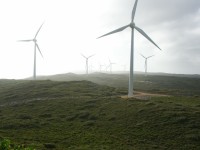New data shows prevention still the best cure for energy reliability
Friday 08 Mar 2019Australia has just gone through the warmest summer on record.
According to the Bureau of Meteorology, temperatures exceeded two degrees above the long-term averages, delivering the hottest summer the country has seen since 2012-2013.
The heat was widespread, with regions in NSW, Victoria, and Western Australia all experiencing record summer heat.
The harsh Australian summer presents the greatest danger to our energy systems, as heatwave conditions push demand to extreme levels and weather events put infrastructure to the test. In recent years, many living in the eastern states have had to experience electrical blackouts and brownouts during these sweltering conditions.
Obviously, no one wants to have to deal with the prospect of losing power during extreme temperatures. The consequences range from uncomfortable inconvenience to potentially deadly for our infants and our elderly.
It’s natural that when people are forced to go through these experiences, they are eager to identify what’s to blame and how to ensure they don’t have to continue to suffer through these events.
Unfortunately, this is where facts have been hard to find and conjecture has run rampart.
The aftermath of the 2016 South Australian blackout was a particular catalyst for the media commentary and political grandstanding put forward constantly since then: renewable energy was simply not reliable enough to supply the electricity needs of our states.
It’s an argument that’s gathered steam, creating considerable uncertainty around how states should be investing in their energy systems, including the ideal energy mix, for the future.
But a new report from the Grattan Institute has called out this trend, saying that blaming renewable energy for failures of the reliability of Australia’s electricity supply is wrong and dangerous.
The most interesting take away from the research was that more than 97 per cent of outages over the past decade were due to problems with the poles and wires that transport power.
In other words, the source of the energy generation had nothing to do with the outages. In fact, a lack of generation capacity on hot days caused 0.1 per cent of all outages over the past decade. That’s one in a thousand. The remaining culprits behind outages were unavoidable instances such as falling trees, inquisitive animals, and car crashes.
If the overwhelming majority of issues come from energy transmission issues, it follows that investing in maintenance and infrastructure would be the most important factor in preventing these outages.
The Grattan Institute report correctly identifies that there is a tension between aiming to completely eliminate all outages and the prohibitive cost guaranteeing that would impose. While Australians need a highly reliable energy system, they certainly can’t afford electricity companies passing on the costs after years of escalating power prices.
The report specifically mentions the $16 billion spent over a decade in New South Wales and Queensland on so-called ‘gold-plating’ of the distribution network. Those costs were passed on to the customers and were a major factor in price rises.
It’s obvious that a balance needs to be struck between investing in system reliability and keeping prices as low as possible for consumers. But consider how difficult that balance is to maintain if there’s a third factor these companies are focused on: profit.
Origin recently put out a forecast indicating it would lose $44 million in pre-tax earnings if proposed legislation to introduce default pricing, in effect replacing electricity retailers' non-discounted "standing" offers, passes in Federal Parliament. Those savings would flow to roughly one fifth of customers.
That’s the fundamental difference for WA. When your network is in public hands, profits generated from operations can be invested back into the network rather than siphoned to shareholders.
Western Australia is in the enviable position of still having state ownership of its energy system. This gives us the opportunity to explore how our state can look at investing operating profits into an ideal energy mix for our state and ensuring a high standard of reliability, without having to make customers pay exorbitantly.
This week WA Energy Minister Bill Johnston launched the Western Australian Energy Transformation Strategy, which in his words will “deliver cleaner, affordable and more reliable energy to households and businesses for decades to come.”
We’re looking forward to the discussion around how to improve WA’s energy sector. There are big decisions to make and many challenges to address but its vital Western Australians use their power to deliver the energy outcomes they will need to power the state into the future.

